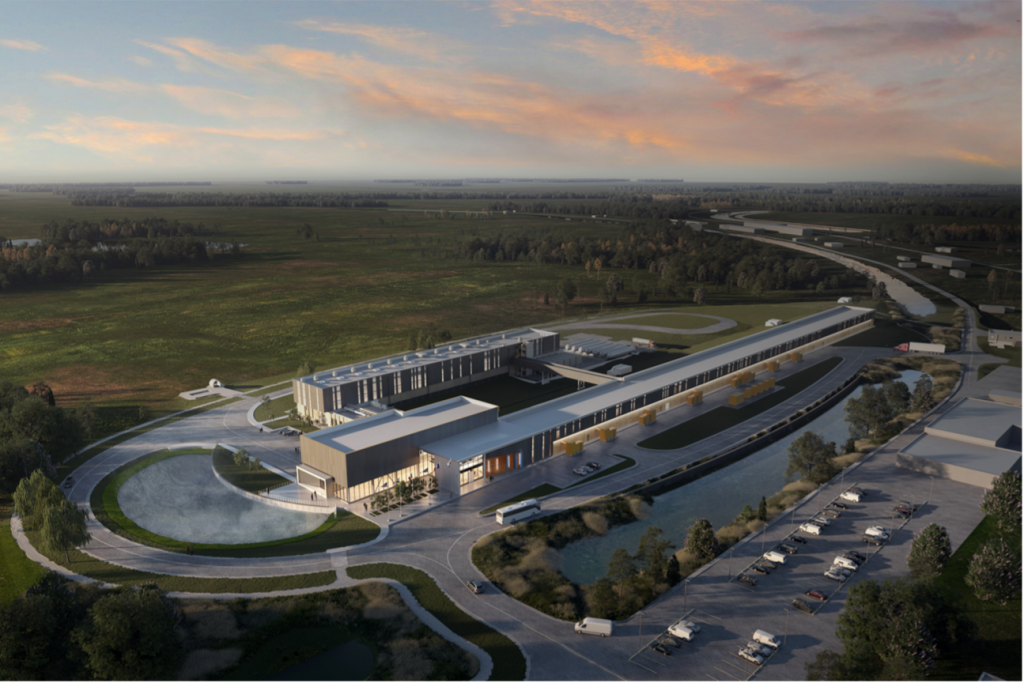The accelerator upgrade project at the U.S. Department of Energy’s Fermi National Accelerator Laboratory made important progress before the end of 2022. In December, Whittaker Construction & Excavating Inc. was awarded the contract to build the Linac Complex for the Proton Improvement Plan II project, or PIP-II.
PIP-II is an essential enhancement to the Fermilab particle accelerator complex. Its new 215-meter linear accelerator, or linac, will eventually power the high-energy neutrino beam for the international Deep Underground Neutrino Experiment, hosted by Fermilab.
The Linac Complex is the biggest single procurement for PIP-II. The approximately 800,000-square-foot complex has four components: the linac tunnel, where the linear accelerator will reside; the linac gallery that will house equipment, much of which will come from our international partners as in-kind contributions; the high bay building, where the loading dock and non-superconducting front end of the linac will be located; and a beam transfer line.

An artistic rendering of the PIP-II campus at Fermilab. The Linac Complex is the long building in the foreground and the associated tunnel below grade; it will house a 215-meter-long linear particle accelerator that will power the world’s most powerful high-energy neutrino beam. Image: Fermilab
To build the complex, Whittaker will excavate 76,000 cubic yards of earthwork and construct 50,000 square feet of below-grade enclosure, requiring 20,000 cubic yards of concrete, as well as 55,000 square feet of surface buildings.
The entire construction project is expected to take approximately 39 months, starting January 2023.
Kevin Bomstad, senior project manager at Whittaker Construction, said, “We are very excited to be a part of another PIP-II construction project. As a local business, we are just as excited for our entire construction team of local subcontractors within Northern Illinois and the Greater Chicago Metro area. WCEI is proud to support a project that reinforces Batavia’s reputation as an international hub for high-energy physics.”
In November, Fermilab received funds from the Inflation Reduction Act, some of which are allocated to PIP-II. These funds will be used to accelerate long-lead time items to mitigate supply chain issues.
Fermilab is located on 6,800 acres of prairie land in Batavia, Illinois, a Chicago suburb. The area selected for the PIP-II site minimizes the impact on the prairie, which Fermilab maintains. The site resides along Fermilab’s Main Ring Road, where contractors can work without interrupting other operations of the lab.
Find more information about PIP-II at pip2.fnal.gov.
Fermi National Accelerator Laboratory is supported by the Office of Science of the U.S. Department of Energy. The Office of Science is the single largest supporter of basic research in the physical sciences in the United States and is working to address some of the most pressing challenges of our time. For more information, please visit science.energy.gov.
